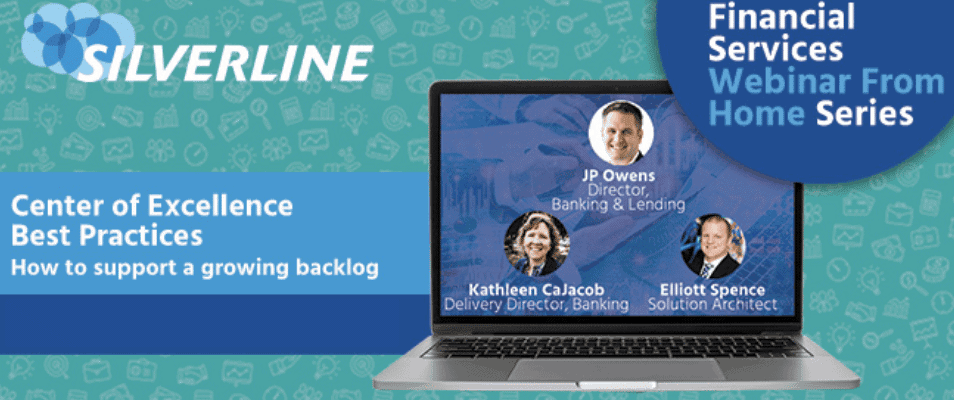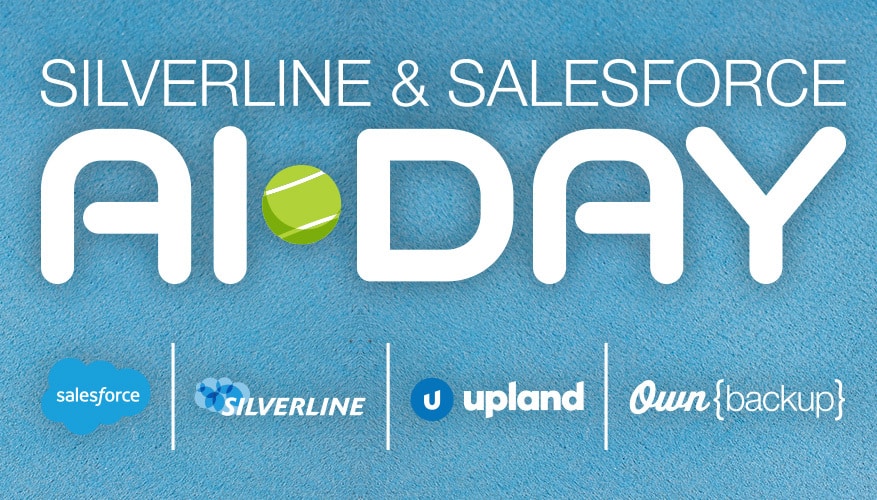It feels pretty amazing to have a successful Salesforce Org up and running — until you check the backlog and see how much more there is to be done. But managing a backlog doesn’t have to stress you out. With the right programs and proper training in place, a daunting backlog can easily transform into an intuitive and innovative problem-solving to-do list.
That’s why I sat down with two of my fantastic colleagues, Kathleen CaJacob and Elliott Spence. They have a combined 30 years of experience in banking, building and leading Salesforce Center of Excellence (CoE) teams. We talked through the ins and outs of managing a growing backlog for a Salesforce implementation and how that impacted their financial teams.
Watch the recording here or read on for a full recap.
5 Steps to Managing a Complex CoE Backlog
As the CoE backlog continues to grow, it can get overwhelming. Managing a complex backlog, especially as more and more teams start to realize the value of Salesforce, can be challenging. There’s always something more you can be doing. Take these three steps to manage your backlog:
1. Build one intake process
While it’s important to keep communications lines open, what you don’t want to do is have requests come in from every which way. If you’re an SA who has been pinged, emailed, or cornered near the office water cooler to ask “about this really cool feature,” you know what I mean.
That means creating one backlog across the Salesforce platform that balances your smaller, business-as-usual enhancements with bug fixes and larger strategic initiatives. To do this, create a request form in Salesforce that asks for business impact:
- Client impact — this type of request outweighs the others. If it’s going to make your clients’ lives easier, better, or more likely to buy from you, that’s jumping to the top of the backlog
- Compliance/regulatory impact — similarly, this high-priority type of request related to making sure we were compliant with our data usage and practices
- Operational efficiency — smoothing out any process and making it easier for the team
- Technology — fixing any bugs, errors, or technological limitations
That way, you can make sure your bank is benefiting as a whole, keeping your eye on the prize.
2. Prioritize transparently
Putting together a request form that requires your teams to categorize the business need can make this easy. But the larger your organization is, the more chaotic your backlog can get. The key to making it work is to communicate among your teams, breaking your CoE into smaller lines of business if needed, and making sure your request form has enough information that you can easily build user stories and understand the business impact.
You can easily set up a CoE backlog in Salesforce, making it transparent and easily accessed by anyone, so they know where their request is in the process and a potential timeline for it to be picked up by the team.
3. Create an annual release calendar — and stick to it
In addition to the CoE backlog, make an annual release calendar that clearly shows when different features will be released, and stick to that calendar. That way, any changes that need to be made in Salesforce — especially larger strategic projects — have known timelines, and stakeholders are aware of what impacts them and when.
That keeps the backlog from being too overwhelming, and helps your stakeholders see the bigger picture. Plenty of backlogs have discrete, small tasks and bug fixes that make it harder for business leads to know when things are coming down the pipeline.
4. Drive Salesforce adoption
Part of supporting your growing backlog is about making sure your current projects are adopted by your organization. That requires two key skills: Training and communication.
Your users come from a wide range of technical backgrounds. Regardless of your end user makeup, you’re going to want to build a robust training plan that accounts for ongoing learning and engagement. This may include:
- Traveling to retail locations to set up day-long training sessions
- Setting up weekly office hours or training calls centered around a particular topic
- AMA-style Chatter groups
- Monthly new hire training
- How-to guides with screenshots
- Full-length user guides
- Quick video how-tos
- Salesforce’s in-app guidance feature
Everyone learns differently, so include in your training plan a wide variety of activities, from hands-on demonstrations to easy-to-access training manuals.
In addition to a training plan, you’ll need a communications plan for any new feature. Whether that’s in Chatter, an internal newsletter, posting on the company intranet, or talking about it in an upcoming all-hands (or ideally, all of those things!), you need to make sure you get the word out. Give your team as many opportunities as possible to get in touch with you, whether that’s to ask questions, get more familiar with the platform, or learn and relearn features.
5. Ask for feedback
Every line of business will be different, from wealth management to commercial lending, so spend time with your end users to understand what pain points they have with their current processes — and figure out how Salesforce can solve them.
Once you begin to implement your backlog, don’t forget to check back in with your end users. Do your users feel like they’re being heard, and that you’re improving the platform based on their needs? As you get more requests and questions come through, look for any themes, either for features (like a smoother referral process) or process feedback (like a different form of training) so that you can continue to prove the value your CoE brings.
Getting started building your CoE backlog
I’ll leave you with three last pieces of advice from Kathleen and Elliott:
- Be transparent in every step of the process, from shadowing different lines of business to find their pain points, to a timeline that anyone can access. The more your teams understand why you’re doing something, the more likely they’ll adopt it.
- Find SMEs who get both sides of the business. The best Change Champions will understand the business impact, not just the technical changes.
- Be curious. Show your team what you can do with Salesforce by prototyping and beta testing, and once you prove the value, your backlog will grow.
Businesses have many decisions to make within a complex program such as CRM. There are a lot of moving parts, especially as your backlog grows. This is ultimately what the Center of Excellence provides. To begin building out a Center of Excellence, you need to develop a plan which starts with understanding the elements that are necessary to ensure the value of your CRM program is being upheld on your roadmap to long-term success.
Interested in defining a Center of Excellence for your organization? Let’s chat.




